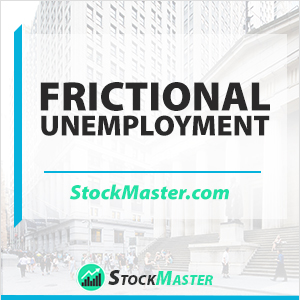 What Is Frictional Unemployment?
What Is Frictional Unemployment?
Definition: Frictional unemployment is a phenomenon that occurs when workers leave their jobs and start looking for work somewhere else. This type of unemployment also occurs when workers are transitioning to new jobs. While it is synonymous with fledgling economies, it also occurs in stable economies.
Understanding Frictional Unemployment and it’s Impact On The Economy
While frictional unemployment is as a result of employment transition, it does not occur during an economic recession. In times of economic downturns, workers rarely leave their places of work in pursuit of greener pastures. Similarly, it tends to decrease as focus shift towards job security rather than pursuing new opportunities.
Frictional unemployment will always be there in any growing economy. As the economy grows, new opportunities are likely to crop up that would entice workers to try to make a transition. For this reason, frictional unemployment is part of a broader employment picture.
Frictional Unemployment Formula Calculation
The frictional unemployment formula is calculated by simply dividing workers who are actively searching for new jobs by the current total labor force. In the calculation, workers are classified into three: Those who left their jobs, workers who are returning to their workforce, and finally new entrants.
Economists consider frictional unemployment as a positive event in an economy. For starters, it indicates the presence of job opportunities which current workforce can tap into. The emergence of new opportunities can cause workers to quit their current jobs and make the transition.
Frictional unemployment provides businesses with a vast pool of human capital to choose from. Similarly, frictional unemployment can help companies and businesses gain access to employees that are more qualified.
However, Frictional unemployment can also pose significant challenges, especially in instances where workers quit their jobs but struggle to land new jobs. In this case, there may be a reduction in productivity as well as spending power, as the jobless worker might not have the financial muscle to maintain a given standard of living.
How Frictional Unemployment Occurs
Frictional unemployment mostly occurs when new graduates or people looking for their first job lack the resources or experience to land preferred jobs. In this case, they may opt to settle on any job that comes calling while awaiting new opportunities. Once a preferred opportunity crops up, the new graduate or first-time job seeker may quit their workstation and make a transition to the new job
A temporary transition, such as relocation to a new city, also contributes a great deal, to frictional unemployment. Workers quitting their jobs in search of better-paying jobs also contribute to a higher frictional unemployment rate.
A worker may also quit their job, due to sickness, or to go and take care of a family member. Whenever the worker returns to the job market, the same is calculated as an input to frictional unemployment.
Causes of Frictional Unemployment
Frictional unemployment mostly occurs when there is a mismatch between job seekers and available jobs. The issue mostly affects new entrants who are forced to quit their jobs on discovering a new job opportunity that fits their skills.
Likewise, frictional unemployment is the result of career progression, whereby employees transition to new jobs in a bid to enhance their careers. In this case, an employee can transition to a new job, higher role, or to another sector.
Job dissatisfaction
Dissatisfaction with working conditions or salary could cause workers to quit their jobs and transition to new posts. However, for the transition to happen, the workers must first find new jobs with better working conditions as well as desirable remuneration.
Summary
Frictional unemployment is a short term, given that workers tend to make a smooth transition from one job to another. Likewise it doesn’t have a significant negative impact on the economy given that most of the time workers end up in better paying jobs with favorable terms. For that reason, this type of unemployment mostly occurs in economies where there is a free flow of labor, given the vast amount of opportunities.
